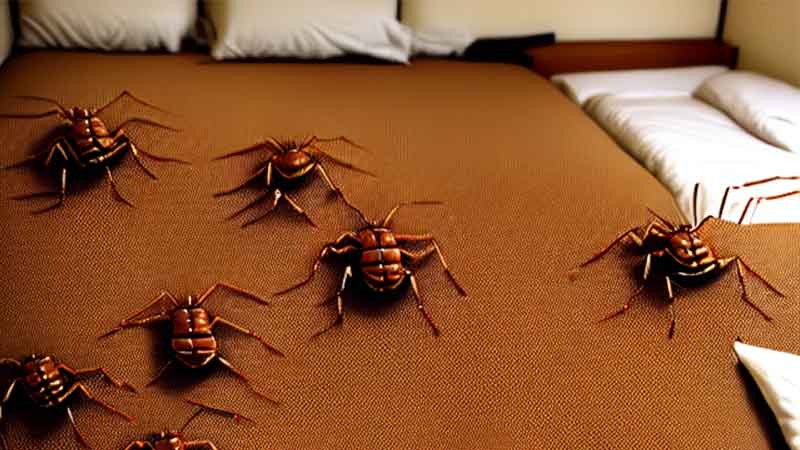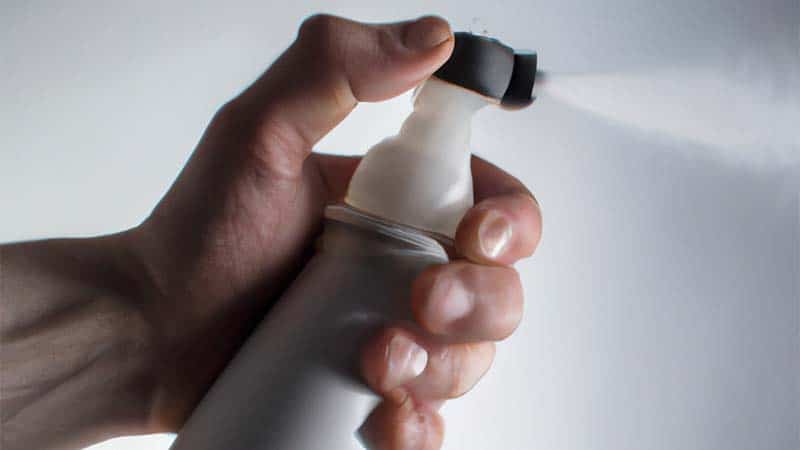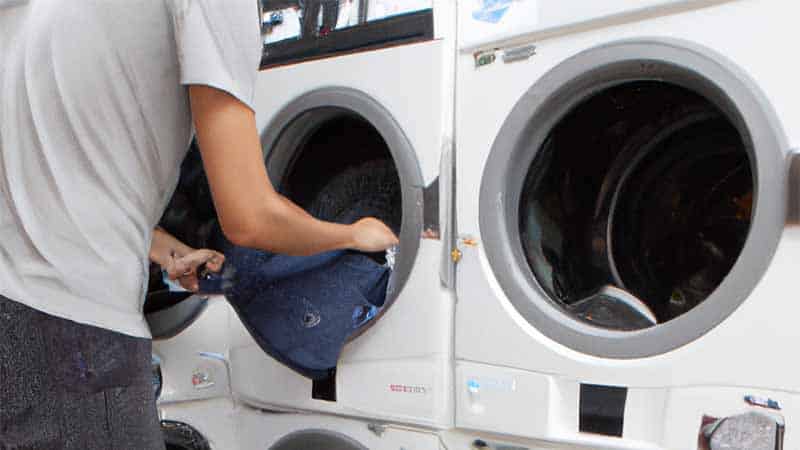Bed bugs can quickly turn your home into a nightmare, causing discomfort, sleepless nights, and potential health risks. Once these tiny pests infiltrate your living space, their ability to spread to other rooms becomes a major concern. Preventing the spread of bed bugs is crucial not only for your peace of mind but also to protect the rest of your home from infestation. In this comprehensive guide, we will provide you with effective strategies and actionable steps to stop the relentless march of bed bugs from one room to another. By understanding their behavior, implementing early detection measures, practicing proper cleaning and treatment, and taking necessary precautions during travel, you can fortify your home and safeguard it against the relentless spread of these unwelcome intruders.

Understanding Bed Bug Behavior
Bed bugs, scientifically known as Cimex lectularius, are members of the Cimicidae family and are tiny, wingless insects. To effectively prevent their spread to other rooms, it is essential to comprehend their behavior and habits. Here are some key points to consider:
1. Nocturnal Creatures: Bed bugs are primarily active during the night, seeking out their human hosts for a blood meal. They are attracted to sleeping people’s emitted warmth and carbon dioxide.
2. Hiding Spots: During the daytime, bed bugs retreat to hiding spots near their food source (humans) and prefer locations in close proximity to beds, such as mattress seams, box springs, bed frames, headboards, and nearby furniture. They can also be found in cracks and crevices, behind wallpaper, and within electrical outlets.

3. Mobility and Hitchhiking Abilities: Bed bugs are adept at traveling and can crawl relatively quickly, though they do not fly or jump. They have a flattened body shape, allowing them to squeeze into narrow spaces and hide in inconspicuous areas. Bed bugs can also cling onto clothing, luggage, and other personal belongings, making them proficient hitchhikers.
4. Prolific Breeders: Bed bugs reproduce rapidly, with adult females laying several eggs per day. These eggs are tiny, about the size of a pinhead, and are typically laid in secluded areas. Given the right conditions, eggs can hatch within one to two weeks, leading to an increased infestation.
5. Resilience and Longevity: Bed bugs are resilient pests that can survive for months without feeding. They are also resistant to many common pesticides, making eradication a challenging process.
6. Chemical Attractants: Bed bugs are attracted to certain chemical signals, including the odor of human sweat and carbon dioxide. These cues guide them to their hosts, allowing them to locate their preferred feeding sites.
Understanding the behavior and habits of bed bugs is crucial for effective prevention and control measures. By knowing where they hide, when they are most active, and how they move, you can develop targeted strategies to disrupt their lifecycle and prevent their spread to other rooms within your home.
Early Detection and Awareness
If you want to stop bed bugs from infesting other parts of your home, early discovery is key. Being proactive and vigilant allows you to identify signs of infestation and take immediate action. Here are some key points to help you with early detection and raising awareness:
1. Recognizing the Signs: Familiarize yourself with the common signs of a bed bug infestation. These include:
- Unexplained bites on your body, often in a clustered or linear pattern.
- Bloodstains on your sheets, pillowcases, or other bedding.
- Dark fecal spots on your mattress, furniture, or walls.
- The presence of live bed bugs, which are little (about the size of an apple seed), reddish-brown, oval-shaped insects.
2. Regular Inspections: Conduct routine inspections in and around your sleeping area, such as your mattress, box spring, bed frame, headboard, and nearby furniture. Use a flashlight to check for any signs of bed bugs, including their eggs, molted skins, or tiny white nymphs.
3. Encourage Reporting: Create an environment where household members or roommates feel comfortable reporting any signs of a potential bed bug infestation. Prompt reporting allows for swift action and containment, preventing the spread to other rooms.
4. Educate Yourself: Stay informed about bed bug behavior, prevention strategies, and treatment options. Understand the importance of early detection and the risks associated with delayed action.
5. Seek Professional Assistance: If you suspect a bed bug infestation or are unsure about the signs you’ve observed, consider contacting a professional pest control company. They have the expertise and tools to accurately identify the infestation and recommend appropriate treatment methods.
6. Community Awareness: Share information about bed bugs with neighbors, friends, and colleagues to create awareness. Discuss prevention techniques and encourage them to be proactive in detecting and addressing any infestations promptly.
By being proactive in early detection and raising awareness, you can swiftly identify and address bed bug infestations before they have a chance to spread to other rooms. Always keep in mind that the sooner you take action, the simpler it will be to manage and get rid of these pests, ensuring the comfort and well-being of your home and its occupants.
Immediate Containment Measures
Taking immediate containment measures when you discover a bed bug infestation is crucial to prevent their spread to other rooms in your home. By isolating the infested areas and implementing effective containment strategies, you can limit the movement of bed bugs and minimize their impact. Here are some key steps to follow:
1. Identify Infested Areas: Conduct a thorough inspection to determine the extent of the infestation. Identify the rooms or specific areas where bed bugs are present. Focus on locations where they are likely to hide, such as mattresses, box springs, bed frames, and nearby furniture.
2. Isolate Infested Items: Begin by isolating infested items to prevent bed bugs from spreading further. Remove all bedding, linens, and clothing from the infested rooms and seal them in plastic bags. This prevents bed bugs from hitchhiking on these items to other areas of your home.
3. Use Bed Bug-Proof Encasements: Invest in bed bug-proof mattress and box spring encasements. These specially designed covers encase the entire mattress and box spring, creating a barrier that prevents bed bugs from entering or escaping. Ensure the encasements are properly installed and free of any tears or openings.
4. Create Barriers: Apply barriers to prevent bed bugs from climbing onto beds or furniture legs. Double-sided tape or petroleum jelly can be applied around the legs of beds and other infested furniture. These sticky barriers can trap bed bugs and limit their movement.
5. Repair Cracks and Seams: Seal any cracks, crevices, or gaps in walls, baseboards, and furniture to diminish the places where bed bugs could hide. Use caulk or sealant to close off entry points and reduce their ability to migrate to other areas.
6. Avoid DIY Remedies: While there are numerous DIY remedies suggested online, it’s essential to exercise caution. Some home remedies or pesticides may not be effective and can even exacerbate the problem. Consult with a professional pest control service to determine the most appropriate treatment options.
7. Seek Professional Help: Bed bug infestations can be challenging to eliminate completely without professional assistance. Consider contacting a reputable pest control company with experience in handling bed bugs. They can provide expert advice, perform thorough inspections, and employ targeted treatments to eradicate the infestation.
Remember, swift action and containment measures are crucial when dealing with bed bugs. By isolating infested items, using protective encasements, creating barriers, and seeking professional help, you can effectively contain the infestation and prevent bed bugs from spreading to other rooms in your home.
Proper Cleaning and Treatment
Cleaning and treating infested areas are essential steps in preventing the spread of bed bugs to other rooms. By implementing thorough cleaning practices and targeted treatments, you can reduce the population of bed bugs and disrupt their lifecycle. Here are key steps to follow for proper cleaning and treatment:
1. Vacuuming:
- Use a high-powered vacuum cleaner with a crevice tool attachment to thoroughly vacuum infested areas, including mattresses, box springs, bed frames, furniture, baseboards, and carpets.
- Pay close attention to seams, cracks, and crevices where bed bugs may hide.
- After vacuuming, immediately throw away the vacuum bag or dump the contents of the canister into a plastic bag before discarding it in the trash.
2. Steam Cleaning:
- Cleaning with steam has proven to be an efficient way for eliminating bed bugs and their eggs.
- Use a steamer with a high temperature and direct the steam nozzle along seams, crevices, and other potential hiding spots.
- Ensure the steam penetrates deep into mattresses, upholstery, and other infested items.
3. Laundering:
- Wash infested bedding, clothing, and linens in hot water (at least 120°F or 50°C) for a minimum of 30 minutes.
- For at least 30 minutes, dry them in an oven at a high temperature to kill any remaining bed bugs.
- Place laundered items directly into clean, sealed plastic bags to prevent reinfestation during transport.
4. Clutter Reduction:
- Reduce clutter in infested areas as it provides additional hiding spots for bed bugs.
- Declutter and organize your living space, paying particular attention to areas near the bed.
- Remove unnecessary items that are difficult to inspect and treat.
5. Insecticidal Sprays:
- Consult with a professional pest control service to determine the appropriate insecticidal sprays for your situation.
- Always make sure you follow the directions that the manufacturer or the pest control professional gives you.
- Apply the spray to infested areas, cracks, crevices, and other hiding spots where bed bugs are likely to be present.

6. Professional Treatment:
- In severe or persistent infestations, it is recommended to seek professional help.
- Pest control professionals have access to specialized treatments and equipment that are more effective in eliminating bed bugs.
- They can assess the situation, develop a comprehensive treatment plan, and provide ongoing monitoring and follow-up visits as needed.
Proper cleaning and treatment play a significant role in controlling and preventing the spread of bed bugs. By vacuuming, steam cleaning, laundering with high heat, reducing clutter, using insecticidal sprays, and considering professional treatment, you can effectively target bed bugs and minimize their impact on your home.
Laundry and Clothing Care
Proper laundry and clothing care are crucial in preventing bed bugs from spreading through your clothing and infesting other rooms or areas of your home. By following specific guidelines and taking preventive measures, you can minimize the risk of bed bugs hitchhiking on your clothes. Here are important steps to consider:

1. Containment and Segregation:
- When you suspect or confirm a bed bug infestation, immediately gather all potentially infested clothing and bedding.
- Put these items straight into plastic bags that can be sealed, since this will prevent bed bugs from escaping and moving to other locations.
- Keep the sealed bags in the infested room or a designated area away from unaffected rooms.
2. Sorting and Laundering:
- Sort the infested clothing into small, manageable loads to ensure proper cleaning and heat exposure.
- Transfer the contents of each sealed bag directly into the washing machine, avoiding any contact with the surrounding environment.
3. High Heat Washing and Drying:
- Wash infested clothing in hot water at a temperature of at least 120°F (50°C).
- Use a detergent suitable for high-temperature washing to enhance the cleaning process.
- Run the clothes through a full washing cycle to ensure thorough cleaning.
4. Drying at High Heat:
- After washing, transfer the clothing to the dryer immediately.
- Using the maximum heat setting, dry the clothing for at least 30 minutes or longer to effectively kill any remaining bed bugs or eggs.
- The high temperatures reached during the drying process are crucial for eliminating bed bugs.
5. Sealing Cleaned Clothing:
- Once the clothing is completely dry, remove it from the dryer and place it into clean, sealed plastic bags.
- Avoid placing clean clothes on surfaces or in areas that may still have bed bugs present.
6. Preventative Measures:
- When traveling or staying in infested areas, consider using plastic bags or specialized luggage encasements to protect your clothing.
- Avoid placing luggage or clothing on beds or upholstered furniture.
- Upon returning from a trip, immediately launder all clothing, even if it appears to be free of bed bugs.
By following these laundry and clothing care practices, you can significantly reduce the risk of bed bugs spreading through your clothing and infesting other rooms or areas of your home. Promptly washing and drying infested items at high temperatures, along with proper containment and segregation, are key steps to protect yourself and prevent the spread of bed bugs.
Travel Precautions
When it comes to preventing the spread of bed bugs to other rooms, implementing travel precautions is essential. Bed bugs are notorious hitchhikers and can easily latch onto your luggage or personal belongings during your travels. By taking specific precautions and being vigilant, you can minimize the chances of bringing these unwelcome pests into your home. Here are important travel precautions to consider:

1. Research Accommodations:
- Before booking a hotel or accommodation, research their reputation for cleanliness and bed bug incidents.
- Read reviews from previous guests to gather information about any reported bed bug issues.
- Choose accommodations that have a proactive approach to pest control and bed bug prevention.
2. Inspect Your Room:
- Upon arrival, inspect your hotel room thoroughly before unpacking.
- Begin by examining the bed, including the mattress, box spring, and bedding. Look for live bed bugs, bloodstains, or dark fecal spots.
- Check other furniture, such as chairs, sofas, and bedside tables, for signs of infestation.
- Use a flashlight to illuminate dark areas and crevices where bed bugs may hide.
3. Keep Luggage Elevated and Protected:
- Avoid placing your luggage on the floor, bed, or upholstered furniture.
- Use luggage racks or keep your bags on hard surfaces, such as countertops or in the bathroom.
- Consider using specialized luggage encasements or plastic bags to protect your belongings from potential bed bug exposure.
4. Store Clothing Properly:
- Keep your clothing in sealed plastic bags or specialized travel organizers during your trip.
- Avoid placing clothing in hotel drawers or closets that may be infested.
- Seal any soiled clothing in a separate bag to prevent cross-contamination.
5. Inspect and Treat Upon Return:
- When you return home from your trip, inspect your luggage and personal belongings outside or in a designated area.
- Vacuum and wipe down your luggage thoroughly.
- Launder all clothing, including items that were not worn, using high heat to kill any potential bed bugs.
6. Monitor for Signs of Infestation:
- Keep an eye out for any signs of bed bug infestation in your home following your travels.
- Promptly address any suspicious bites, bloodstains, or other indications of bed bugs.
- Conduct routine inspections and be vigilant in early detection to prevent the spread of bed bugs to other rooms.
By taking these travel precautions, You can drastically lower your chances of getting bed bugs into your home and prevent their spread to other rooms. Being cautious, inspecting your accommodation, keeping luggage protected, and taking appropriate measures upon return will help safeguard your home from these persistent pests.
Educating Family and Roommates
In preventing the spread of bed bugs to other rooms, it is crucial to educate and involve your family members or roommates. By ensuring that everyone understands the signs of infestation, the importance of early detection, and the necessary preventive measures, you can work together to maintain a bed bug-free living environment. Here are key points to consider when educating your family and roommates:
1. Awareness of Bed Bug Signs:
- Teach your family and roommates about the common signs of bed bug infestation, including bites, bloodstains on bedding, fecal spots, and the presence of live bed bugs.
- Show them pictures and provide descriptions to help them recognize these signs promptly.
2. Early Detection:
- Emphasize the importance of early detection in preventing the spread of bed bugs.
- Encourage regular inspections of mattresses, furniture, and other potential hiding spots to identify any signs of infestation.
- Establish a reporting system so that any suspicions or sightings can be immediately communicated to everyone in the household.
3. Shared Responsibility:
- Highlight that preventing the spread of bed bugs is a shared responsibility among all household members.
- Explain that individual actions, such as practicing good hygiene, proper laundry care, and vigilant inspection, contribute to maintaining a bed bug-free environment.
4. Hygiene Practices:
- Stress the significance of maintaining cleanliness and orderliness in living spaces to minimize potential hiding spots for bed bugs.
- Encourage everyone to regularly clean and declutter their rooms, vacuum mattresses and furniture, and seal any cracks or crevices that could be used by bedbugs for hiding.
5. Travel Awareness:
- Educate your family and roommates about travel precautions and the risk of bed bugs during trips.
- Share the necessary steps to inspect hotel rooms, protect luggage, and launder clothing upon return to prevent bed bugs from entering the household.
6. Professional Assistance:
- Inform your family and roommates about the importance of involving professional pest control services in cases of suspected or confirmed bed bug infestations.
- Explain that professional assistance can ensure effective treatment and provide guidance on preventive measures.
7. Ongoing Communication:
- Establish open lines of communication regarding bed bug-related concerns.
- Encourage everyone to share information, questions, or observations about potential infestations, allowing for prompt action and a collaborative approach to prevention.
By educating your family and roommates about bed bug signs, early detection shared responsibility, hygiene practices, travel awareness, professional assistance, and ongoing communication, you can create a unified front against bed bug infestations. Together, you can implement preventive measures, respond swiftly to any signs of infestation, and protect your home from the spread of bed bugs to other rooms.
Conclusion
Preventing bed bugs from spreading to other rooms is essential for maintaining a comfortable and pest-free living environment. By understanding bed bug behavior, practicing early detection, implementing immediate containment measures, ensuring proper cleaning and treatment, taking travel precautions, and educating family and roommates, you can significantly reduce the risk of bed bug infestations spreading throughout your home. Vigilance, proactive measures, and ongoing communication are key to addressing bed bug issues promptly and effectively. Remember, by following the outlined strategies and seeking professional assistance when needed, you can protect your home and create a bed bug free environment for you and your loved ones to enjoy.
